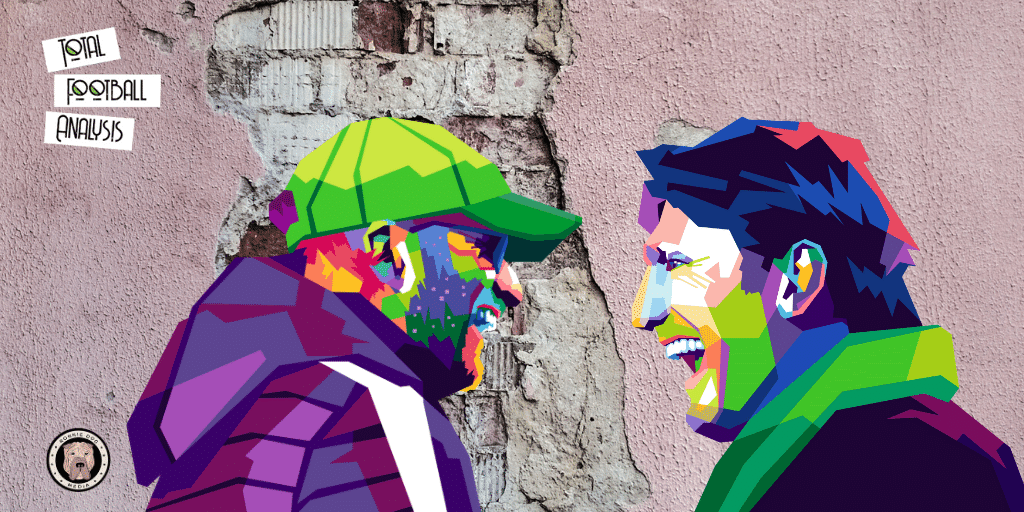
When preparing for any game, one of the main topics which should come up is how the opposition presses. This impacts the whole shape of the game and how a side looks to build up, and so by knowing how the opposition presses, build-up can be adjusted or practiced in order to gain the biggest advantage from it. But with each pressing system comes different strengths, and more importantly, different weaknesses, and therefore it’s beneficial for a coach/analyst to have the skill of knowing how to unpick a press no matter what it is. In this tactical analysis, I’ll look at some common pressing strategies used by top teams throughout Europe, and assess how best to ‘break’ them.
Disclaimer
There are two ways of thinking about this. On one hand, for every pressing system, a complete overhaul and change in build-up shape could occur given the time to practice it, which would be tailor-made to each team. On the other hand, sides can stick to their usual build-up pattern but have slight tweaks in patterns and movement and positioning and a greater emphasis on certain areas in order to exploit teams. It all comes down to pragmatism, and whether or not a coach wants to cater to the opposition and completely change their style of play or philosophy.
With that being said, it’s important to point out that in this article I will only focus on high pressing, as mid and low presses start to go too far towards how to score a goal almost, which isn’t the focus of the article.
Liverpool’s 4-3-3
We’ll start with probably the best press in football- Liverpool’s 4-3-3, which we can see outlined below. Liverpool’s 4-3-3 pressing scheme places emphasis on the central areas, with the centre backs pressed by the wingers while they use their cover shadow to eliminate the passing lane to the full-back. The striker (Roberto Firmino) covers the central area and uses his cover shadow to prevent the pass being played into a pivot behind him. The passing lane between the winger and striker is left open deliberately, in order to initiate a pressing trap on the opponent on their blind side. Liverpool’s scheme is so impressive as with three players they can cover five opposition players, six if you include the midfielder involved in the pressing trap.
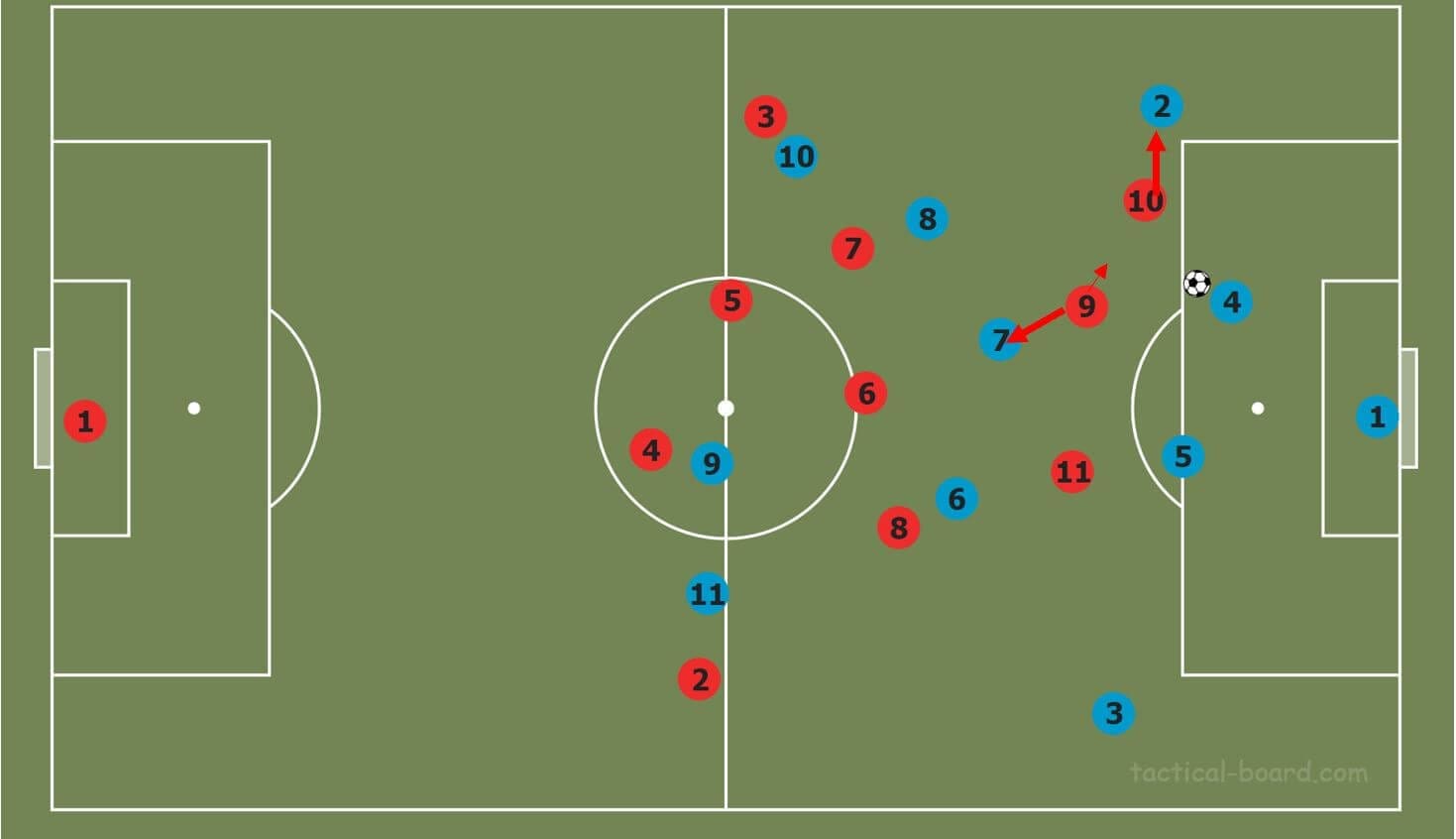
How to break it
When thinking of how to break any press, the weak point of the press has to be found. In this case, the weakest point is Roberto Firmino’s role, as he is covering a large space with the players he is covering behind him at multiple angles. As a result, this is where I’ll target.
We can see the structure of the build-up side below, with the centre backs split wide and therefore the goalkeeper stepping higher to assist ball circulation. Two pivots drop on Roberto Firmino, giving him a dilemma and making it more difficult for him to cover both options. This forces the other winger to come across and help cover, and if they don’t come across the six can receive in a good central area.
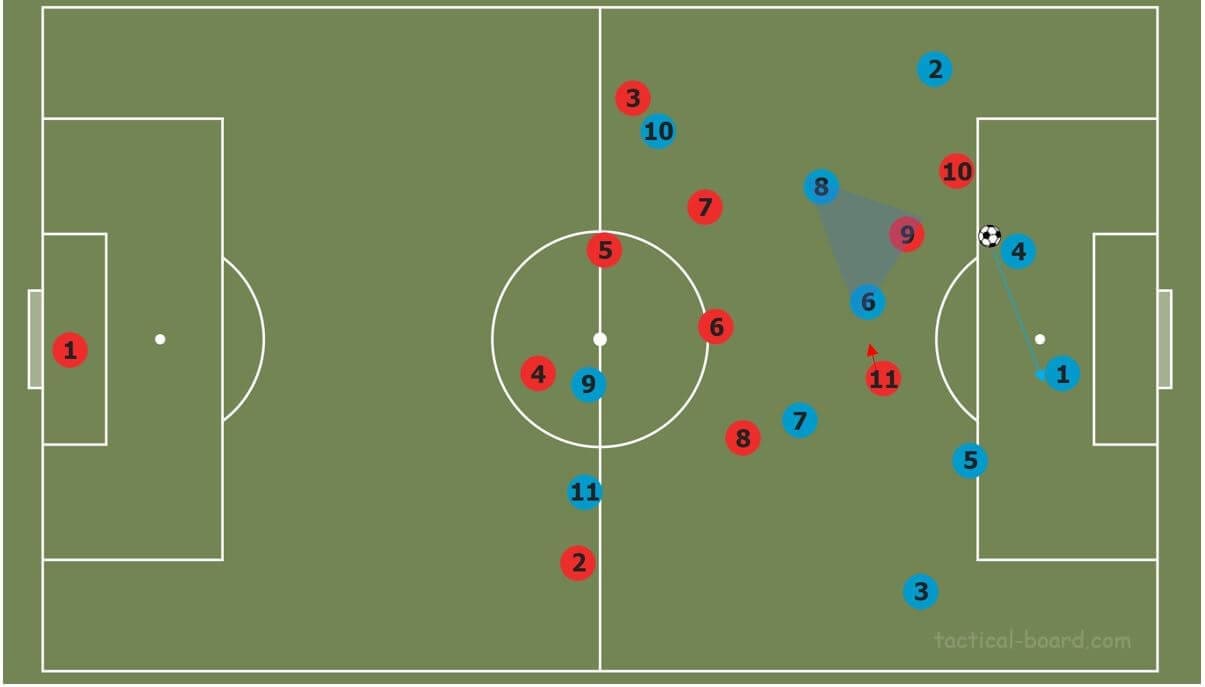
Once the winger comes inside, the ball can be played back to the goalkeeper and quickly to the other centre back. This forces Liverpool to try and get across quickly, but won’t be able to get across quickly enough to cut the passing lane from centre back to full-back. As a result, this passing lane is open, as is potentially the straight pass inside. If the full-back presses, the opposition can look to exploit that wide area.
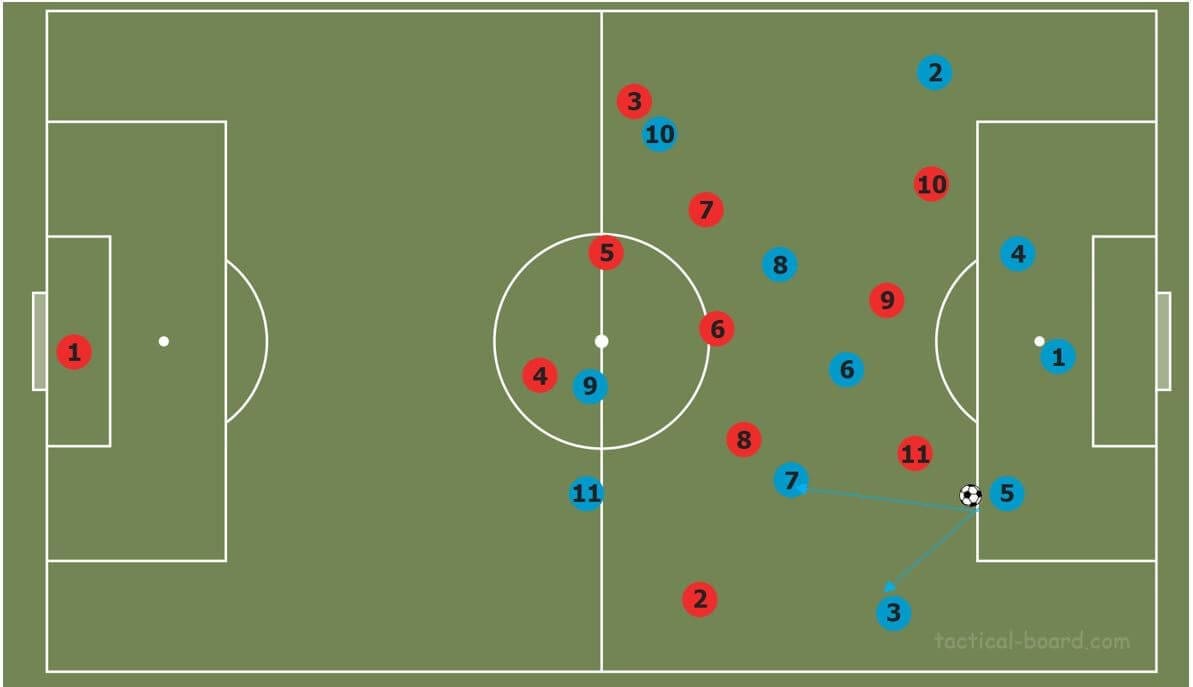
Here Napoli use a similar way to overcome the first line, with two pivots on Firmino and the ball eventually worked out to the full-back, who is pressed by the central midfielder with Liverpool deep. Due to the deep positioning of the midfield, a central pass can open up to the ball far central midfielder, who then has time and good body orientation to pick out a pass.
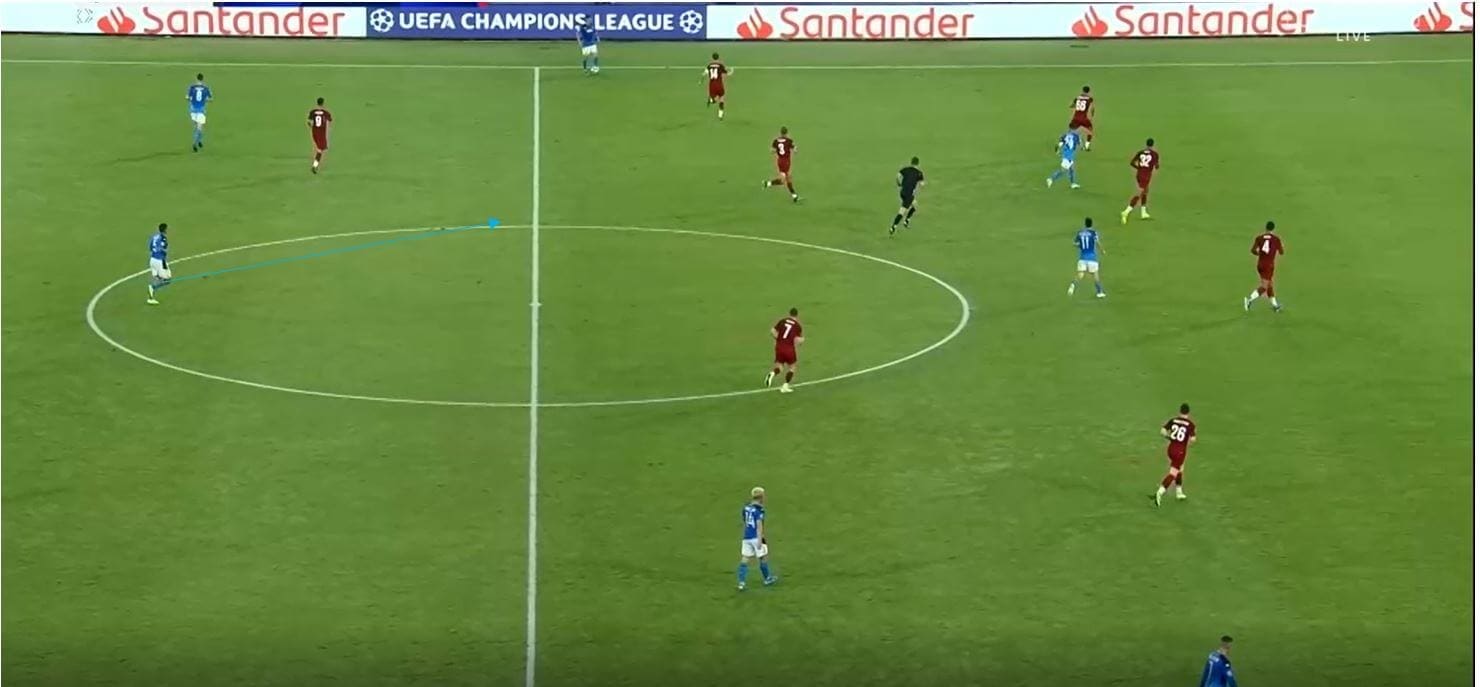
In a very deep area here Manchester City use a similar concept, with the centre back moving up to double up on the pivot. Here, Liverpool’s spacing is slightly off and an excellent pass by Bravo allows Rodri to progress forward. The left channel is now wide open with Salah following Rodri, and so a simple pass wide can be played.
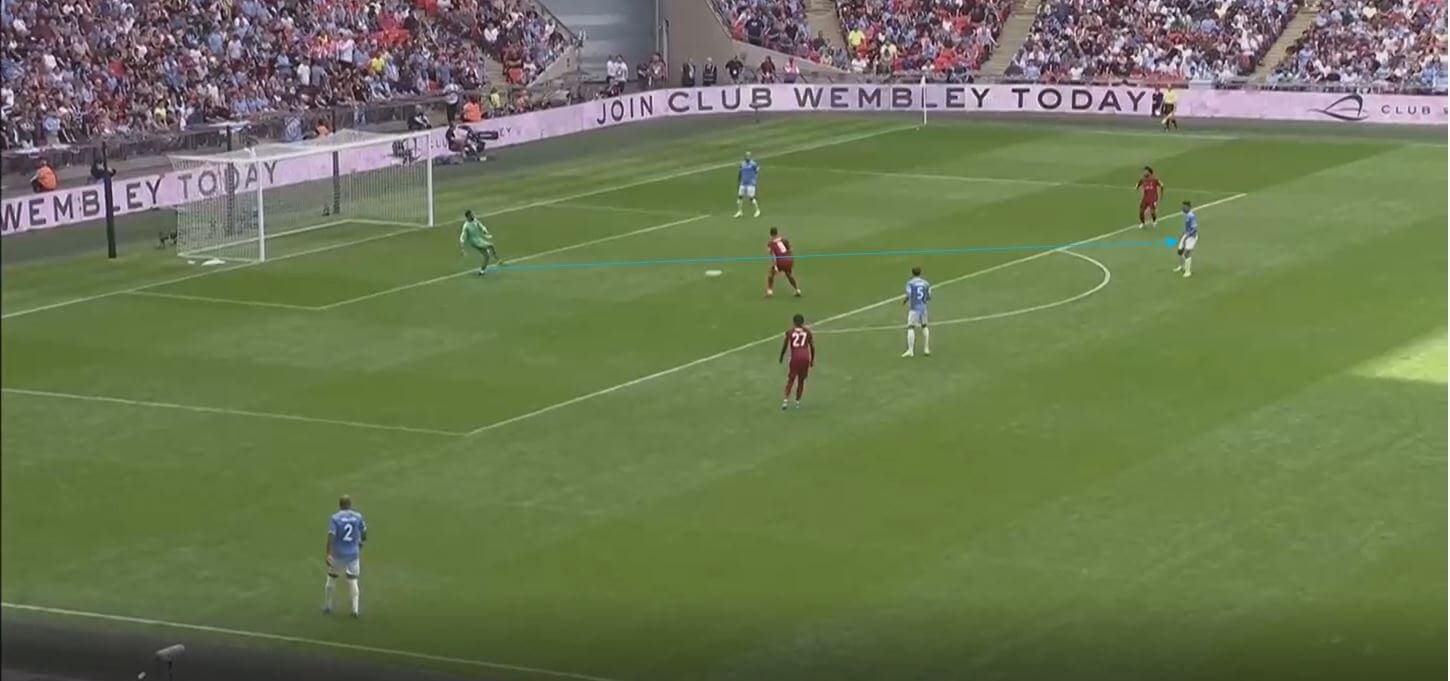
Another alternative would be to play a long pass from goalkeeper to full-back, but long passes take time to reach their target, and so this gives Liverpool players time to make pressing and recovery runs and manage the opposition’s build-up.
Rotations
This next strategy to beat Liverpool’s press is inspired by Tim Walter’s methods, who I wrote about in the TFA 2020 magazine which is available for free. It involves decoy runs, rotations, and centre backs breaking the first line.
Here the left full-back inverts to aid build-up, while the number eight makes an aggressive, quick, decoy run into the space highlighted, and is followed by the Liverpool midfielder. The number five also gets ready to move forward.
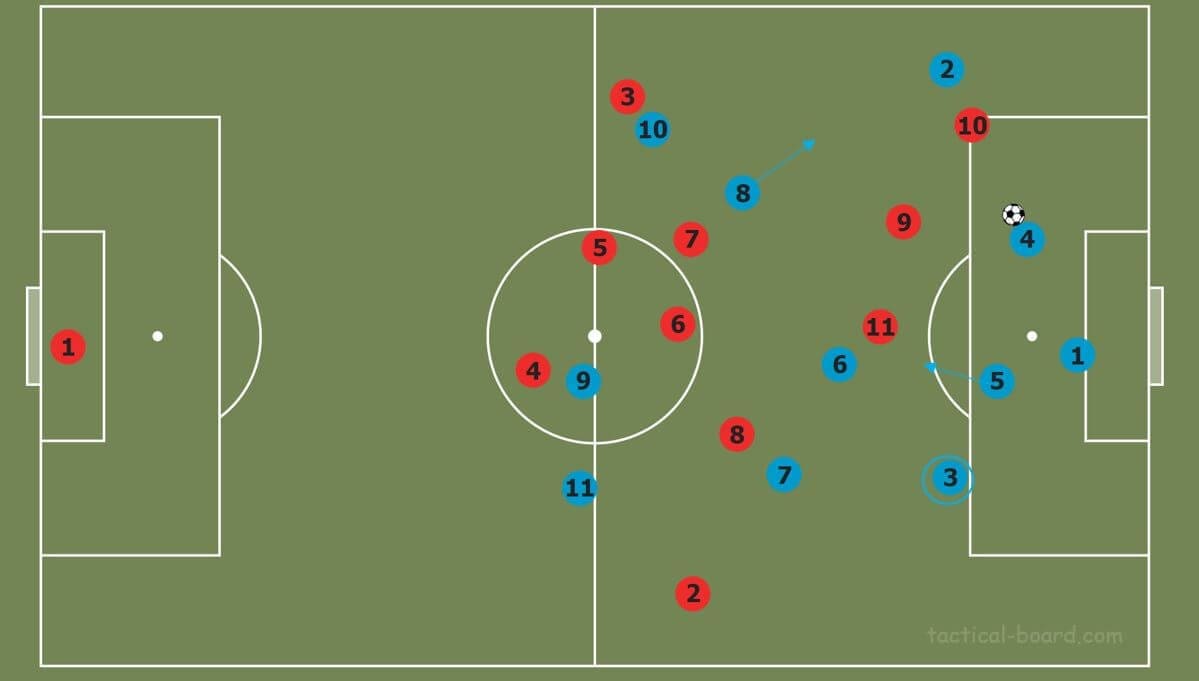
The decoy run attracts the number eight and creates a larger space in the middle, while the number three acts and goalkeeper help to circulate the ball. Once the ball reaches the goalkeeper, the number five starts making a forward movement, so that when the ball is played to the full-back, they are in a position to receive. The full-back rotates with the number five and receives, and can then play into a 4v3 in the midfield which has been created, all without dropping any players backwards.
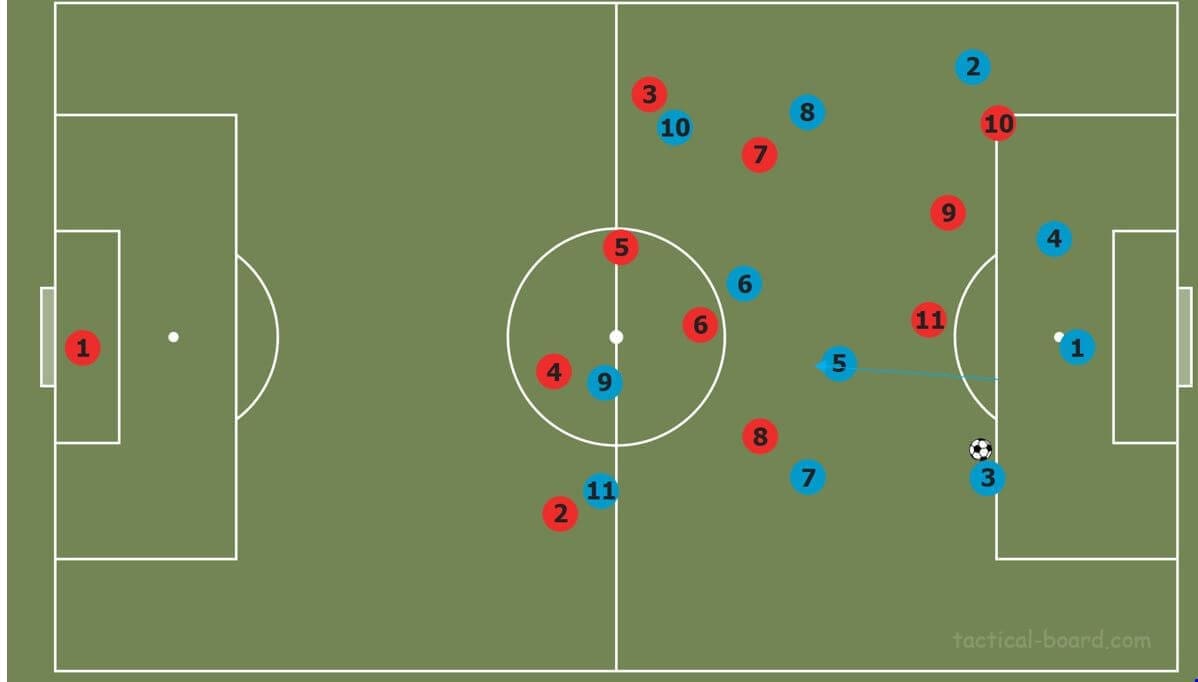
Alternatively here, the number five can move earlier, and riskier passes can be played and a wide full-back can potentially create a 5v3 overload in the midfield.
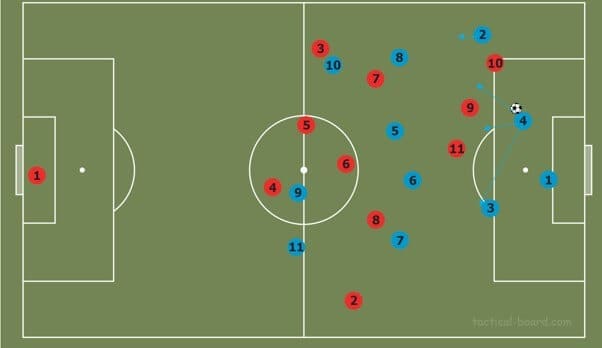
4-4-2 diamond
For this section, I’ll refer mainly to Bayern Munich and the Bundesliga, as in recent weeks they’ve broken the diamond presses of Schalke and Borussia Monchengladbach, which forced changes for both sides. But first, let’s look at the usual structure of a 4-4-2 diamond against a 4-3-3. We can see below the structure of the diamond, with the number ten covering the number six, and with the ball in a central area, the central midfielders marked.
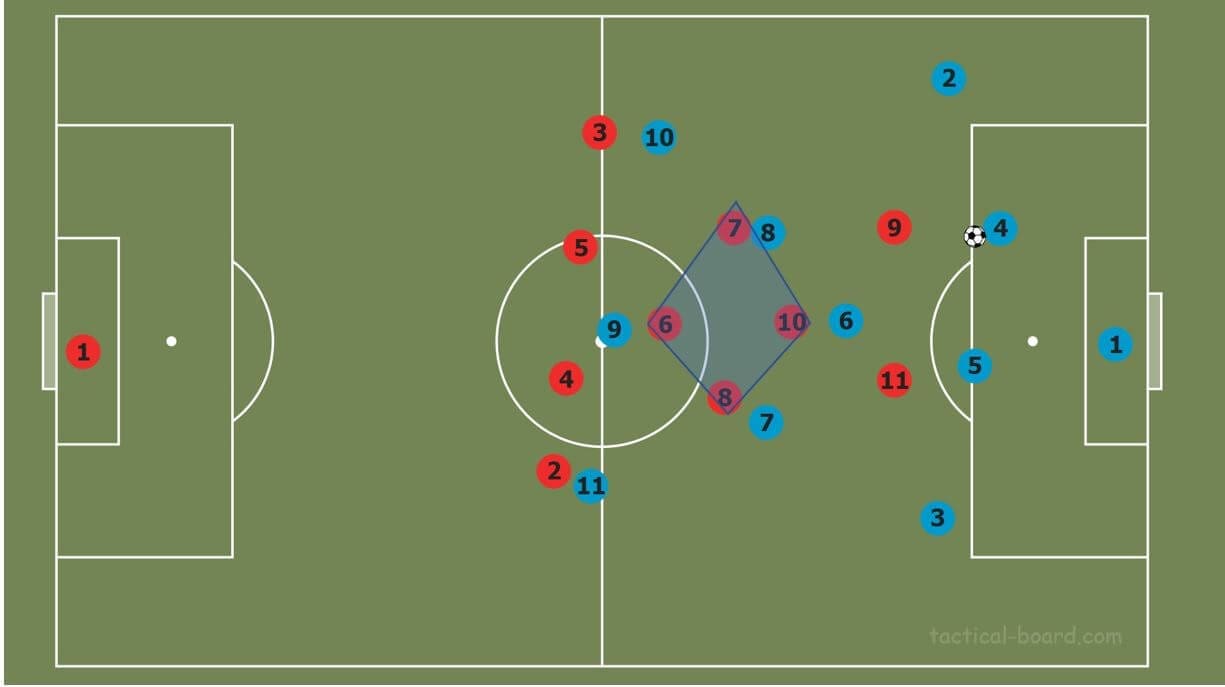
If the ball is played wide, the central midfielder moves out to press the full-back, and the system shuffles across to occupy the nearest midfielders. The shape of a diamond is naturally excellent for pressing as it allows for numerical superiority to be created in multiple directions, as we can see here with a 4v3 created with pressure on the ball.
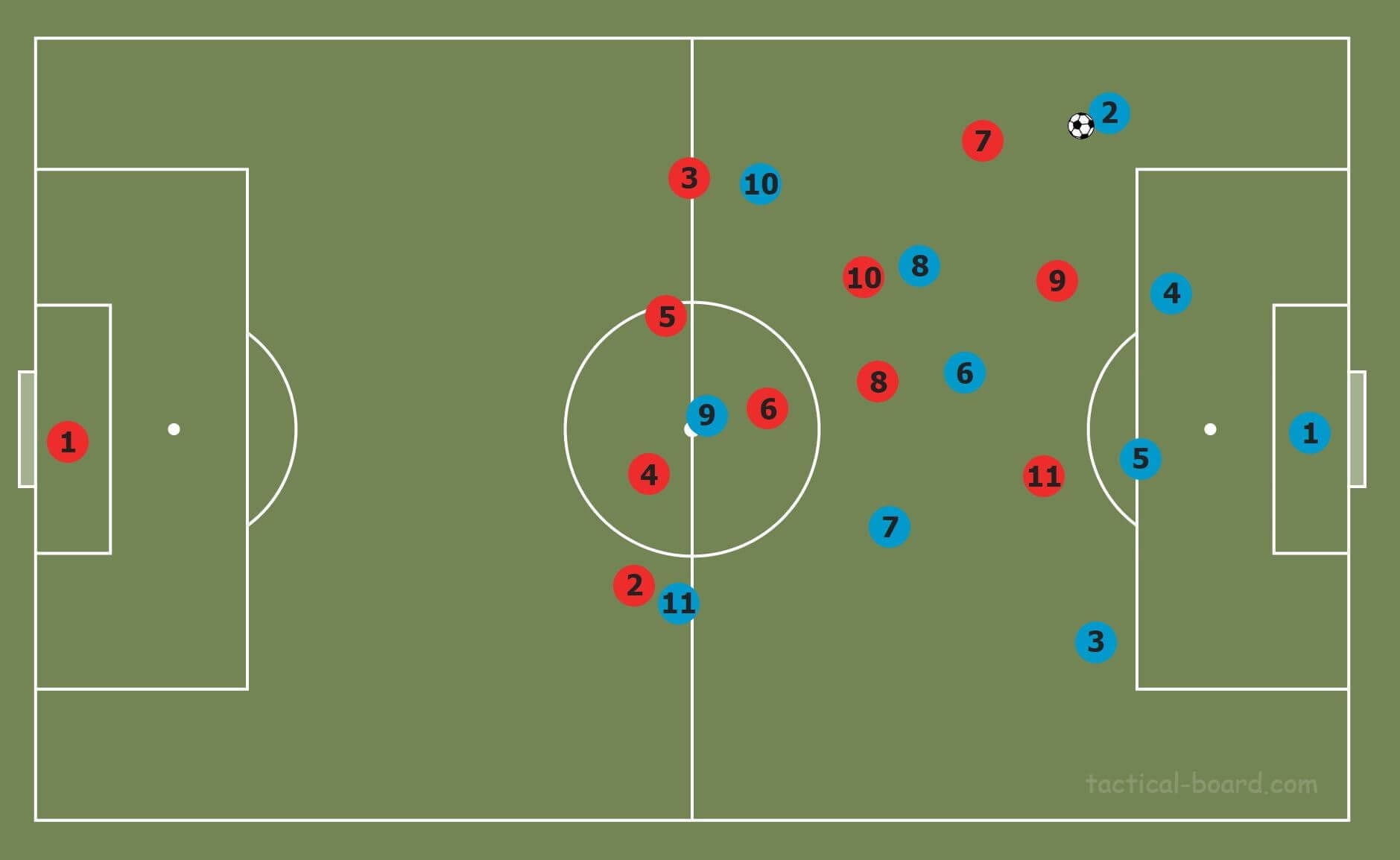
How to break it
The weak point of a diamond press is the lack of occupation of the back four, which is something that is often the case in presses which have two players along the first line. The two responsibilities of the central midfielders is also a weakness that can be exploited, as the number eights have to occupy the full-back and the nearest central midfielder within a phase of play. Bayern used this well to exploit Gladbach’s diamond, as we can see below.
The number ten makes a diversion run in order to open up the space for the dropping six, who can receive as a result of the positioning of the number eight, who increases the distance between the pressing player and the ball receiver.
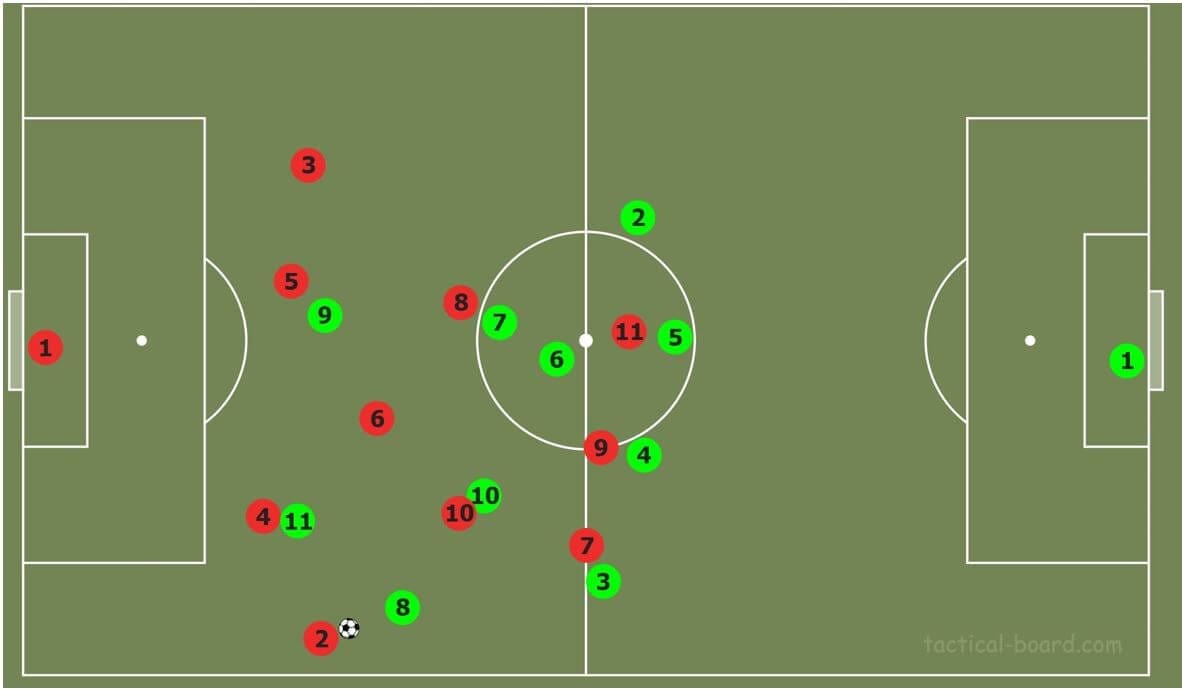
We can see here the space that is created for the arriving number six Thiago, as a result of that diversion run. From there Thiago looks to switch play and take advantage of the numbers committed by Gladbach.
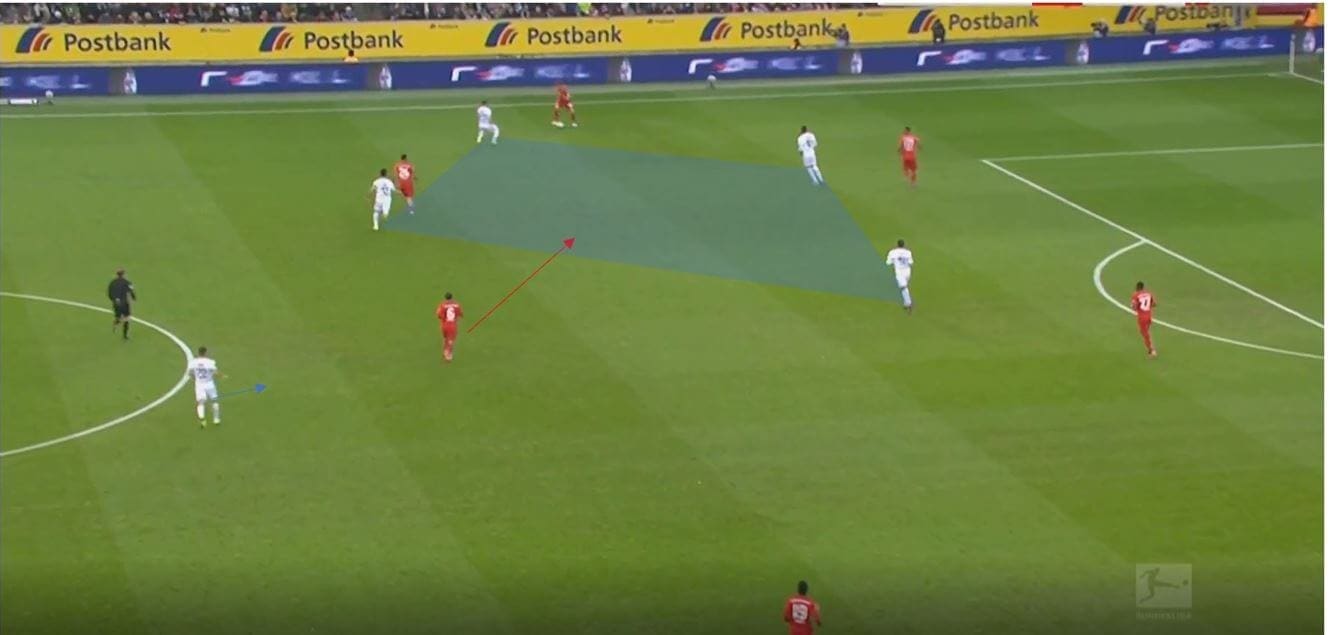
The single pivot within a diamond can also be overloaded if a team is willing to commit men back. This is a similar concept to the Firmino problem explained earlier, and shows that formations are fairly loose and not great descriptors. We can see below, if the centre backs split wide and play the ball between them a space opens up for the six to receive, with pressure from the pivot. Again two players drop close to the pivot, and a player who is responsible for stopping play on the wing is drawn inside. Bayern are able to progress the ball through simple passes in the middle and then finding an angle to play it wide with Thiago receiving and passing the ball wide.
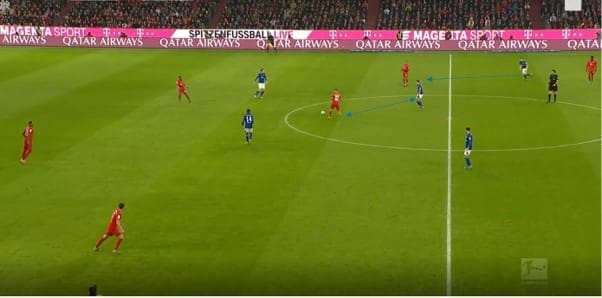
We can see this illustrated here, with the Schalke full-back now overloaded after Schalke’s press is undone. If you have quick players as full-backs who can run with the ball, for example Andrew Robertson or Alphonso Davies, you can cause even more problems going forward.
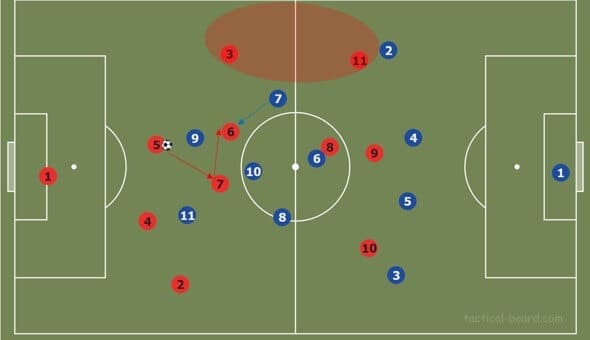
Flat 4-4-2
Another perceived weakness of a 4-4-2 diamond, or in fact any formation involving two players in the first line, is the lack of coverage this allows. In simple terms, two central strikers against four defenders isn’t ideal, and can be stretched if the side building-up can commit players along the back line. As a result, forming a back three can be beneficial. However, matching up against teams with a back four can be easy in a 4-4-2, and as a result, this is a widely used pressing strategy by the likes of Manchester City, PSG and RB Leipzig.
Below we can see how a 4-4-2 press matches up on paper against a 4-3-3 build-up. The wingers press the full-backs while the central midfielders look to manage the obvious 3v2 overload in the centre, with the pivot player becoming the obvious threat.
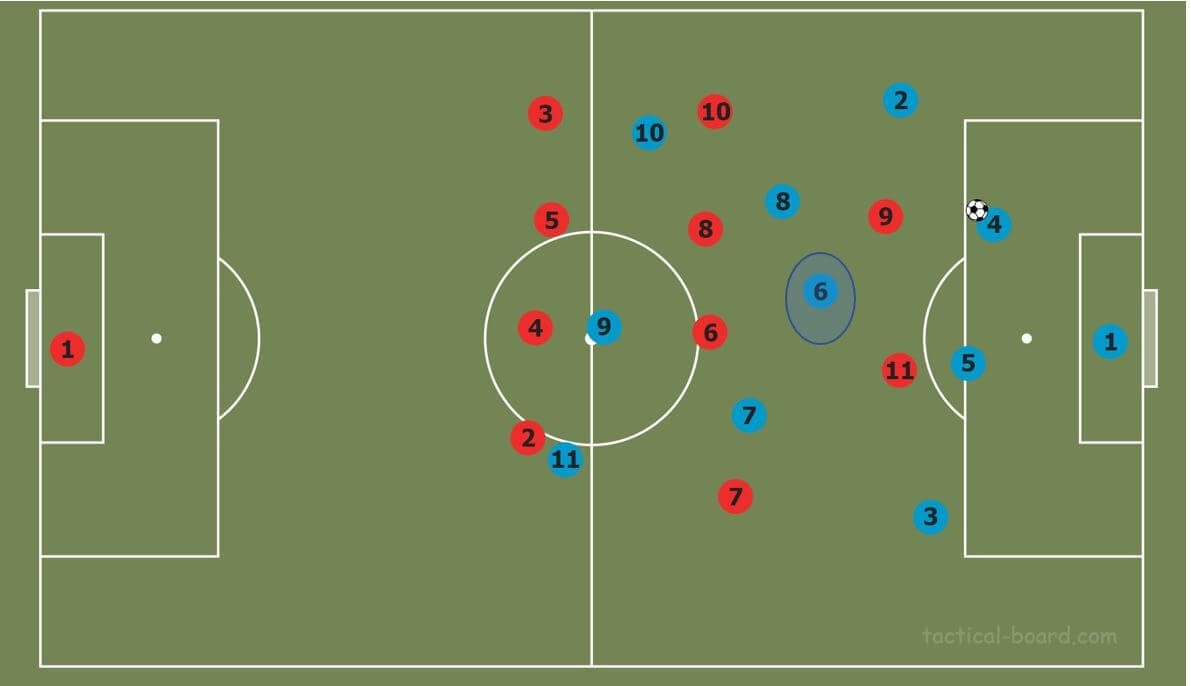
How to break it
The pivot is naturally not on any common line with the opposition, and as a result, a change in shape is needed situationally if the pivot is to be pressed. The greater the space that can be created for this pivot, the greater the results can be. One simple solution can be seen here below, which takes advantage of the 3v2 central overload. A number eight makes a wide diversion run down the line when the full-back receives the ball, this draws the number eight out (presuming the opposition defend in a man orientated way), and opens the space for the six to receive, with the other opposition central midfielder a large distance away.
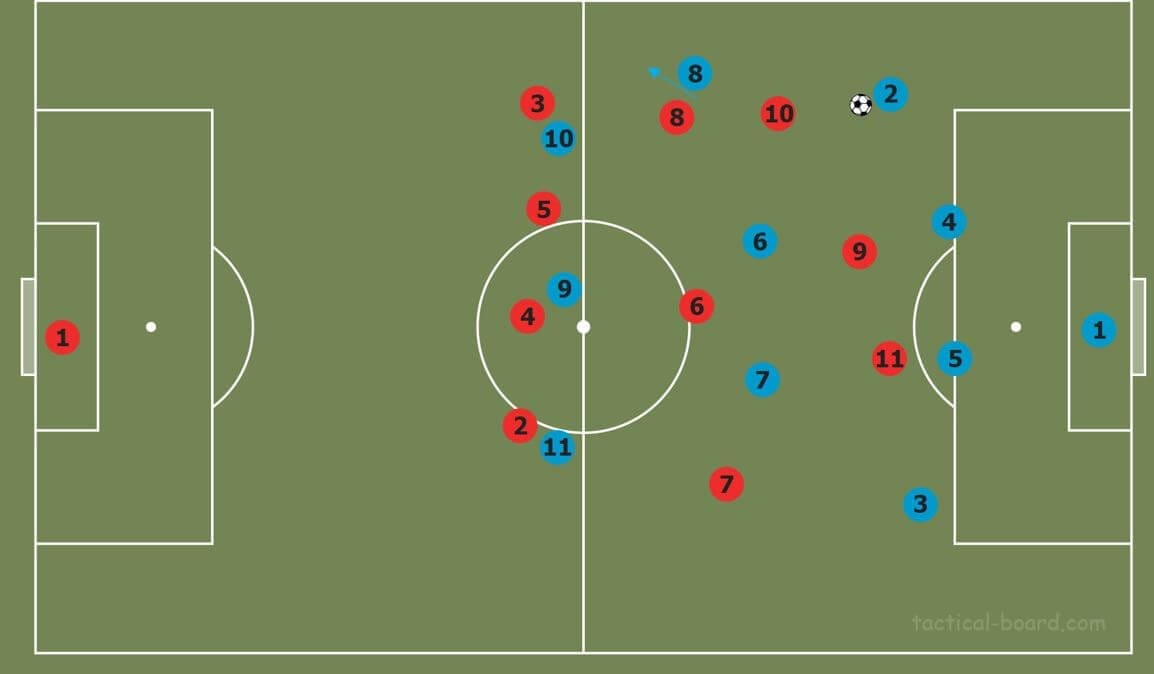
Stretching the first line
As mentioned, having only two players occupy the first line can cause problems for the pressing side, particularly if up against a back three. Gladbach applied this well against Hertha this season, with Hertha sat deeper but the same principle still applying. The forward line becomes stretched and finds it harder to cover the passing lanes for the widest centre back, and as a result, the wingers have a harder job pressing as they have to protect the central and wide areas, as we can see below.
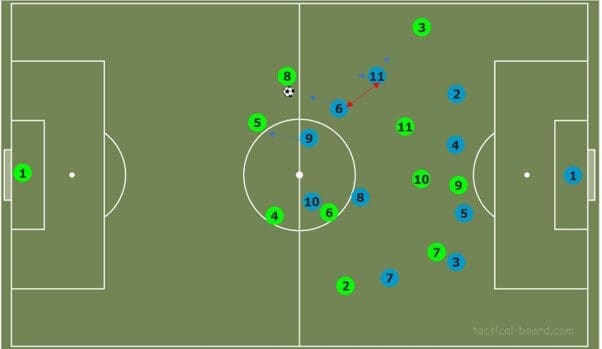
This allows for more space for players in the half-spaces, where the ball can then be progressed forward. Although deeper here, this principle can still be applied, and part of the reason Hertha are deep is that they can’t press high against a back three in this formation.
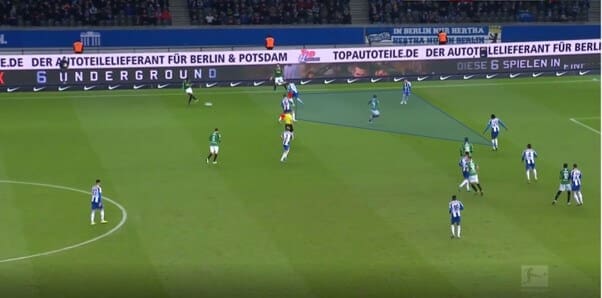
Emptying the pivot
Another great concept from Tim Walter which can be applied here is emptying the pivot space, which still allows for the overload to be maximised. This involves the three-man midfield staying higher and pinning the opposition midfield, and again movement from the back line. Here a narrow back line is needed in order to improve ball circulation, and a simple sideways pass is followed up by the centre back making a forward movement into the pivot space. This allows the side to beat the first line of pressure using just a back four. The left full-back could even push higher to create further overloads.
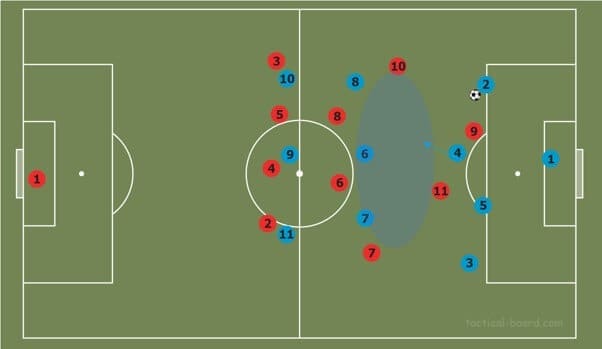
We can see Walter applying this at Stuttgart in one of his first games with the team, with a pass between centre backs on different lines. There is a space in this pivot area due to the positioning of the other midfielders higher.
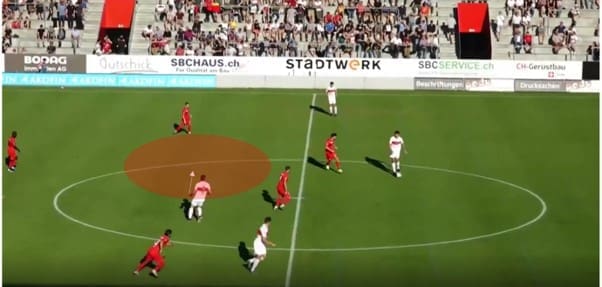
Conclusion
There are of course variations of these pressing schemes and more formations that can be pressed in, but I have actually run out of images for this month’s edition of the magazine! As a result, if this tactical theory analysis is well received, I will do another, so please if you enjoyed the article let me know on Twitter. Adjustments can be made by the opposition if their press continues to be broken, but as a coach, if you can solve these problems and can get your players to solve these problems and find ways to overcome them, it makes your side very difficult to play against.

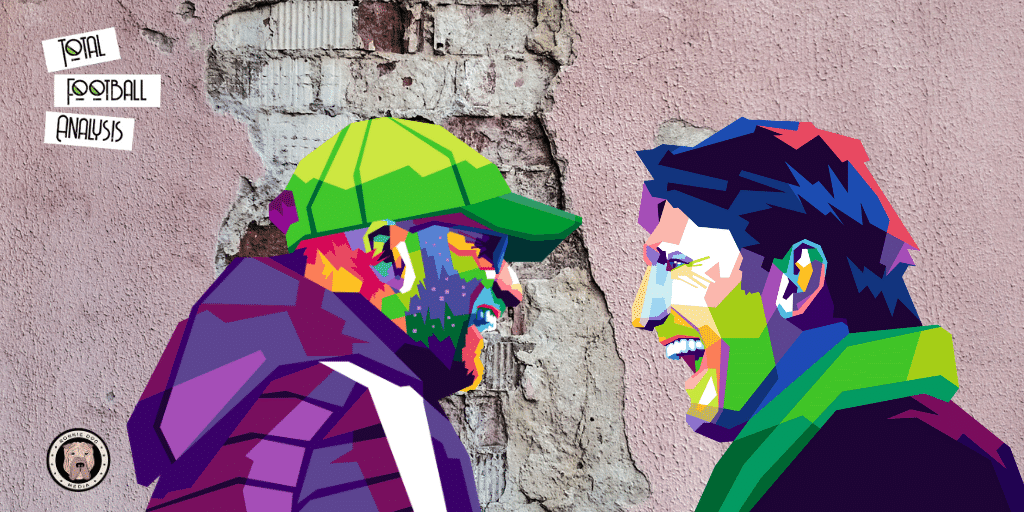



Comments